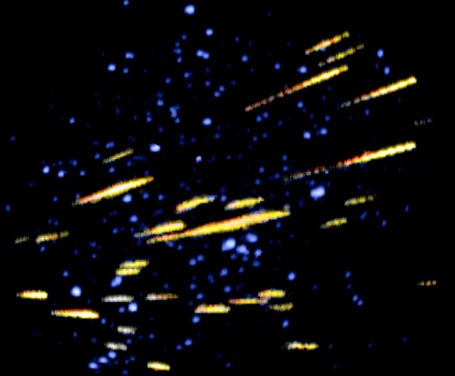
|
Explanation: The Perseid Meteor Shower, usually the best meteor shower of the year, will peak over the next two nights. Over the course of an hour, a person watching a clear sky from a dark location might see as many as 100 meteors. These meteors are actually specs of rock that have broken off Comet Swift-Tuttle and continue to orbit the Sun. This year, however, the Perseids may only be second best. In November the Earth is predicted to move through a denser stream of Comet Tempel-Tuttle debris, possibly causing greater than 10,000 meteors per hour visible at some locations. Pictured above is the alpha-Monocerotid meteor outburst of 1995. This is the last week to send your name to a comet with NASA's planned Stardust mission.
|
January February March April May June July August September October November December |
| |||||||||||||||||||||||||||||||||||||||||||||||||||||||
NASA Web Site Statements, Warnings, and Disclaimers
NASA Official: Jay Norris. Specific rights apply.
A service of: LHEA at NASA / GSFC
& Michigan Tech. U.
Based on Astronomy Picture
Of the Day
Publications with keywords: meteor - Perseids
Publications with words: meteor - Perseids
See also:
- APOD: 2025 August 25 Á The Meteor and the Star Cluster
- APOD: 2025 August 21 Á Mostly Perseids
- APOD: 2025 August 20 Á Perseid Meteors from Durdle Door
- APOD: 2025 August 12 Á Perseids from Perseus
- APOD: 2025 August 6 Á Meteor before Galaxy
- APOD: 2025 August 3 Á Milky Way and Exploding Meteor
- APOD: 2024 November 27 Á The Meteor and the Comet
